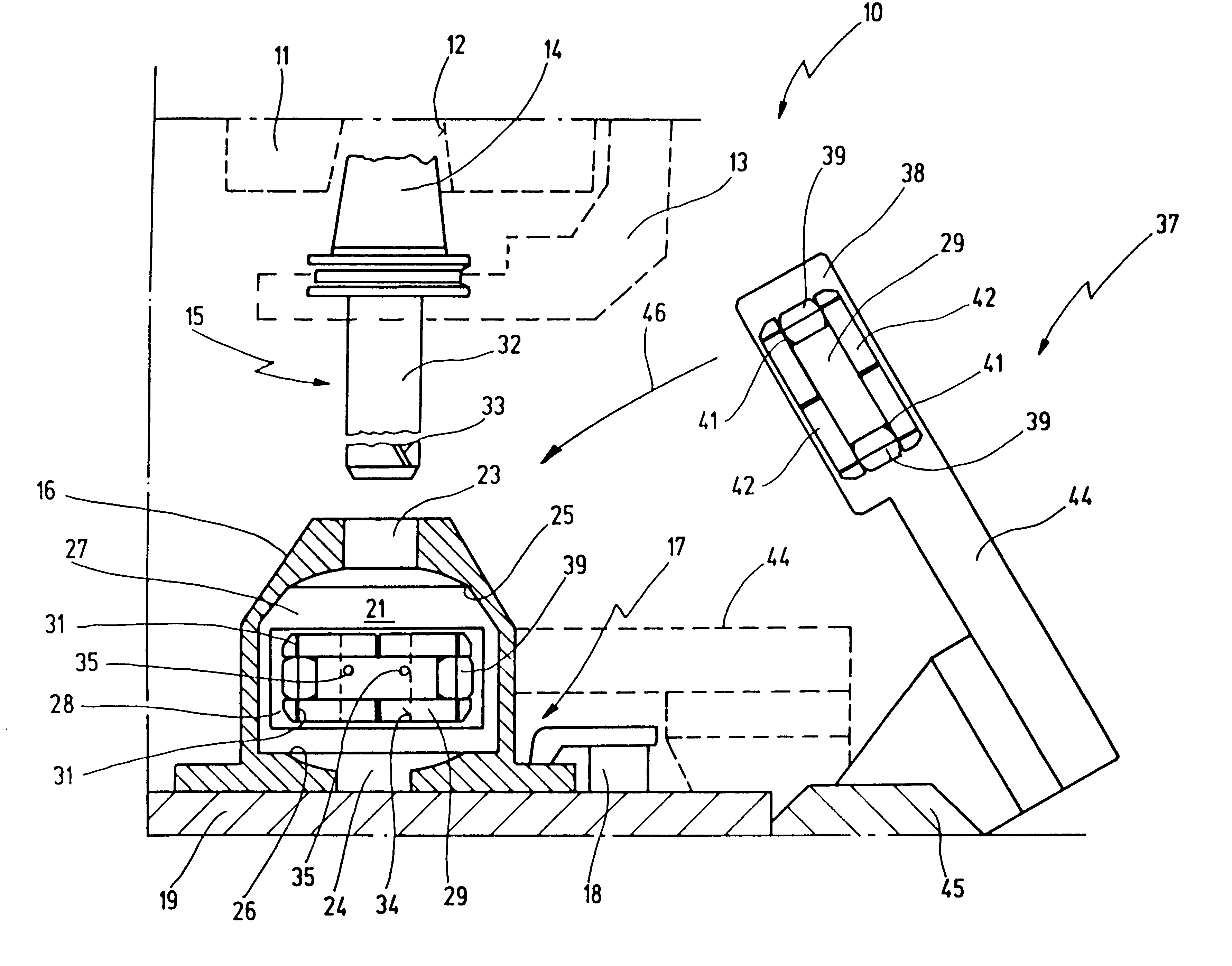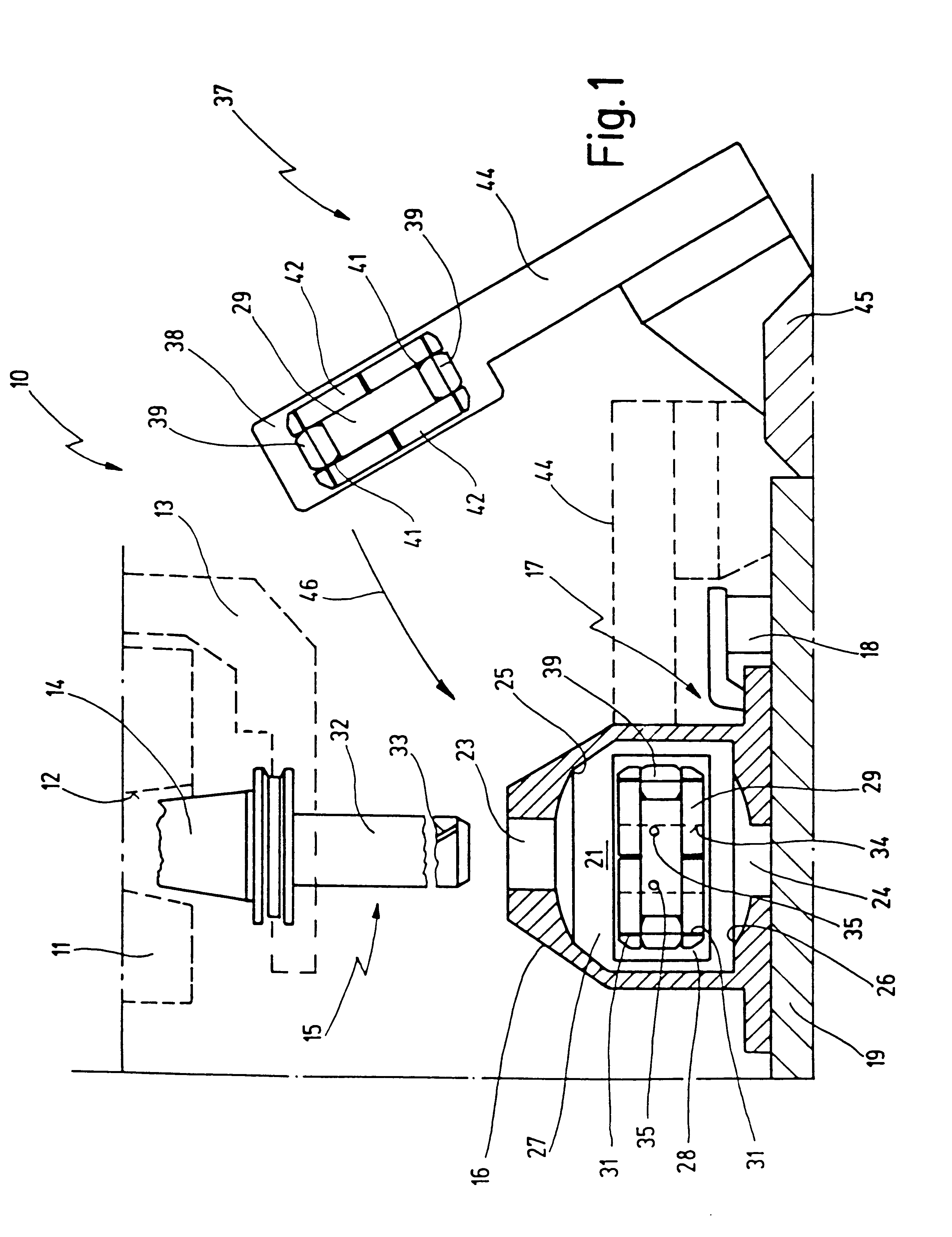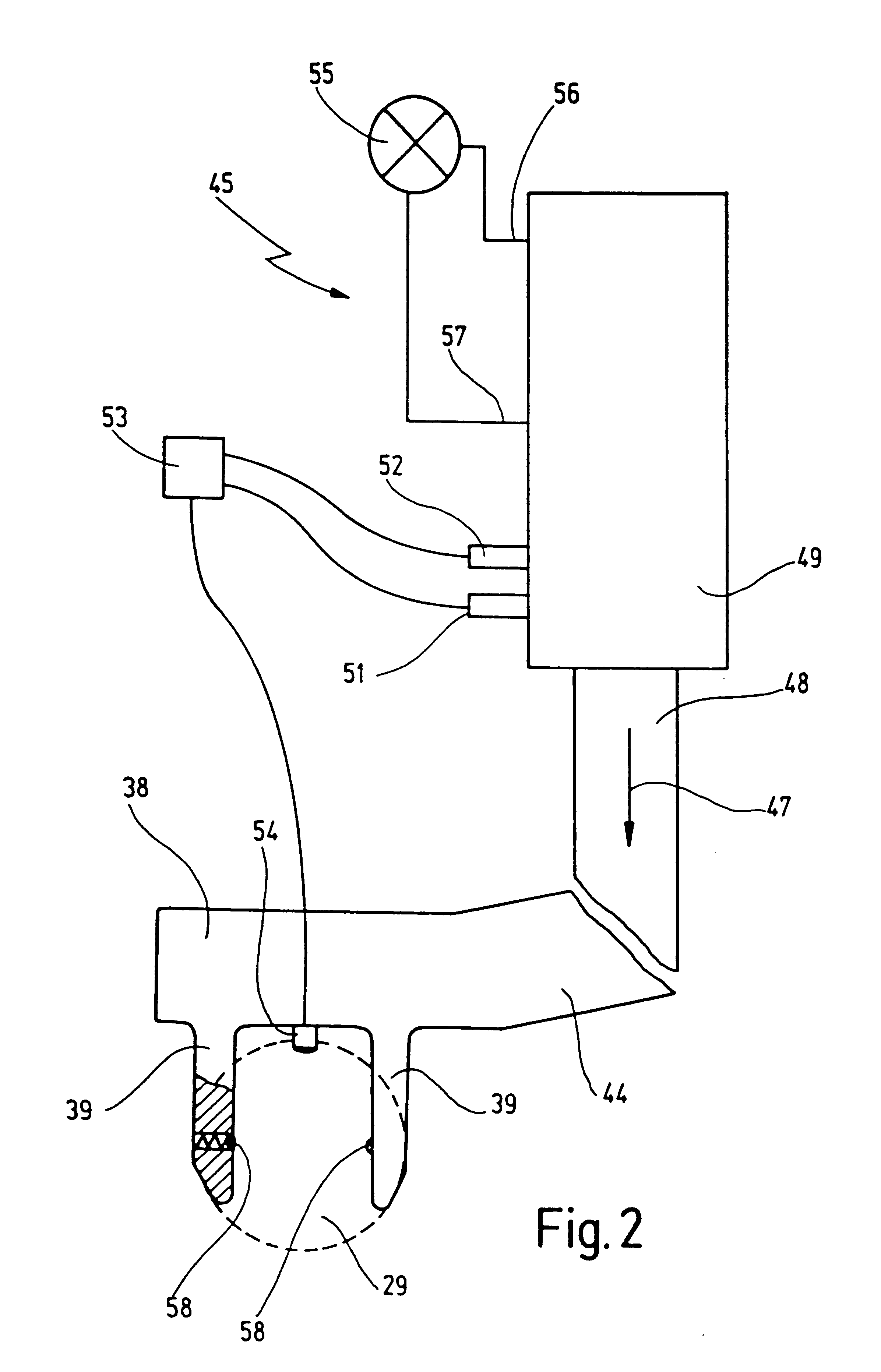Machine tool for machining cavities in workpieces
a technology for workpiece cavities and machine tools, which is applied in the field of machine tools, can solve problems such as the inability to machine the cavity of workpieces, the loss of valuable machining time, and the internal hollowness of bell-shaped workpieces
- Summary
- Abstract
- Description
- Claims
- Application Information
AI Technical Summary
Benefits of technology
Problems solved by technology
Method used
Image
Examples
Embodiment Construction
In FIG. 1, 10 very schematically indicates a machine tool which comprises a spindle (indicated at 11) in which a tool receptacle (indicated at 12) is provided. Machine tool 10 further has a schematically drawn tool changer 13.
Tool changer 13 holds a standardized tool holder 14 which can be inserted into tool receptacle 12. Provided on tool holder 14 is a tool 15 which serves to machine a workpiece 16 that is clamped on a mechanism indicated at 17. Mechanism 17 comprises, for example, clamping claws of which one is indicated at 18, as well as a cradle plate 19 on which workpiece 16 rests.
Workpiece 16 is shown in section in FIG. 1, thus making visible its workpiece cavity 21 into which a bore 23 leads from above and a bore 24 leads from below. The transition between workpiece cavity 21 and bore 23 or 24 is constituted by an edge 25 or 26 that is to be machined. Because the diameters of bores 23 and 24 are relatively small, the tool required for this machining operation cannot be intro...
PUM
 Login to View More
Login to View More Abstract
Description
Claims
Application Information
 Login to View More
Login to View More - R&D
- Intellectual Property
- Life Sciences
- Materials
- Tech Scout
- Unparalleled Data Quality
- Higher Quality Content
- 60% Fewer Hallucinations
Browse by: Latest US Patents, China's latest patents, Technical Efficacy Thesaurus, Application Domain, Technology Topic, Popular Technical Reports.
© 2025 PatSnap. All rights reserved.Legal|Privacy policy|Modern Slavery Act Transparency Statement|Sitemap|About US| Contact US: help@patsnap.com



